At the beginning of the article, we would like to thank the tea enthusiasts who have raised questions about our tea. Your doubts have not only revealed our shortcomings but also helped us understand what our customers are concerned about and confused about! In the process of addressing these questions one by one, both you and we are making progress together, which is great!

Some time ago, our platform published an article titled "Hui Nan Tian, Aged Flavor, and Musty Smell." However, it lacked vivid examples and was not very illustrative.
Coincidentally, during the peak of the recent Hui Nan Tian season, we shipped a batch of tea. We received the following feedback: Why is the tea so damp? Has it mold? Why are the tea leaves clumped together? Why do the "yellow flakes" account for one-tenth of the tea? Why is this batch of tea different from the one I bought last time? Why is the pine smoke aroma gone? Why is the betel nut aroma different? Why does the taste vary?
Don’t panic—let us explain!
Why is the tea so damp? Has it mold?
Friends who have been following our public platform have likely seen how severe the Hui Nan Tian was in Wuzhou recently and have a general idea of the temperature and humidity during that period. Why do we keep mentioning temperature, humidity, and Wuzhou’s climate? Because all of these are intrinsically linked to the tea’s post-production storage. To understand Liubao tea’s storage, one must know about Hui Nan Tian and Wuzhou’s climate.
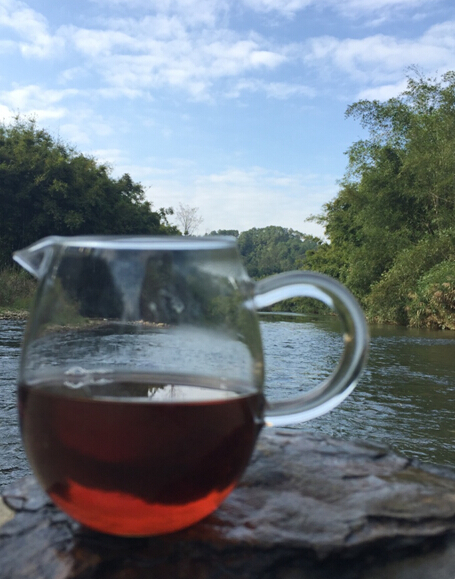
During the post-fermentation process of Liubao tea, the main microorganisms involved include Aspergillus niger, Aspergillus glaucus, Rhizopus, Lactobacillus, yeast, and Penicillium. Hui Nan Tian is considered the golden period for Liubao tea’s transformation. With an average temperature of around 22°C and an average relative humidity of 90%, the growth and reproduction of microorganisms in the tea reach their peak during this time, making these microbial colonies visible to the naked eye. Those unfamiliar with this process might mistake it for mold and even discard the tea—what a pity! Little do they know that once this transformation period ends, the tea’s taste, color, and efficacy will all improve significantly (we suggest that if you ever see our Liubao tea "growing hair," you can send it to us). However, there’s a downside: the tea absorbs moisture from the air and becomes damp, which is likely why Liubao tea was traditionally stored for several years before being sold in the past.
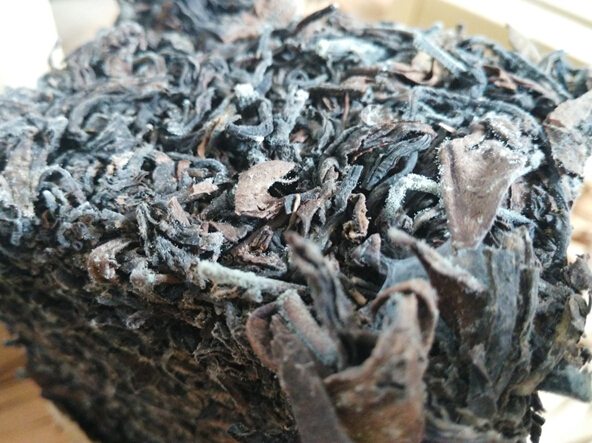
【Qiu Fu】 undergoing transformation during Hui Nan Tian. If the temperature, humidity, and oxygen levels are controlled, golden flowers may eventually grow on the tea.
Solution: If you’re in the north, store the tea in a ventilated area away from sunlight without spreading it out. If you’re in the south, you can store it in a cardboard box or bamboo basket with ventilation but no direct airflow.
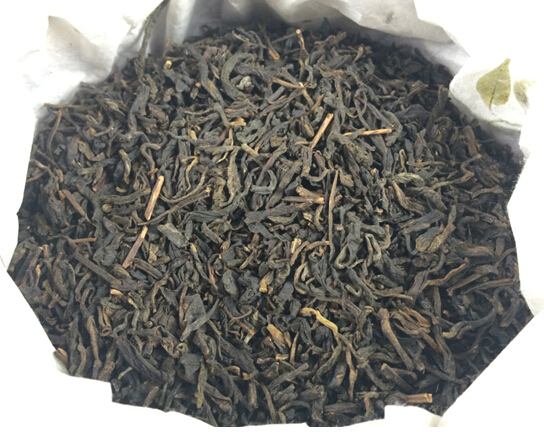
The inner packaging of 【Mo Ling】 and 【Jasmine】 uses rice paper as a layer, which not only adds elegance but also serves as a moisture barrier.
Can we adjust the temperature and humidity to prevent "mold growth"?
Since the invention of tofu by our ancestors 2,100 years ago, it has brought endless joy to generations through its various soybean-derived products. Due to differences in living environments, habits, and climates, tofu has evolved into a wide array of products with different production methods and flavors. Wuzhou’s fermented bean curd and Huangshan’s hairy tofu are just two examples among many.
Liubao tea has been passed down for a thousand years. Over this long history, our ancestors have come to understand the tea’s nature, mastered the changes of the heavens and earth, and deeply recognized the impact of the environment on the growth, production, and storage of Liubao tea. They revered nature, embraced its rhythms, and complied with climatic changes to produce a unique tea with remarkable health benefits and a wonderful flavor—Liubao tea.
The ancestors of Guangshengxiang also followed the principles of harmony with nature, innovating diligently to create four varieties of Liubao tea—Yun, Nong, Xiang, and Qing—by aligning with the seasons, times of day, and temperature variations. This was done to help people regulate the balance of their internal organs through daily tea consumption.
"A wise man makes use of tools." So why bother artificially altering the environment?
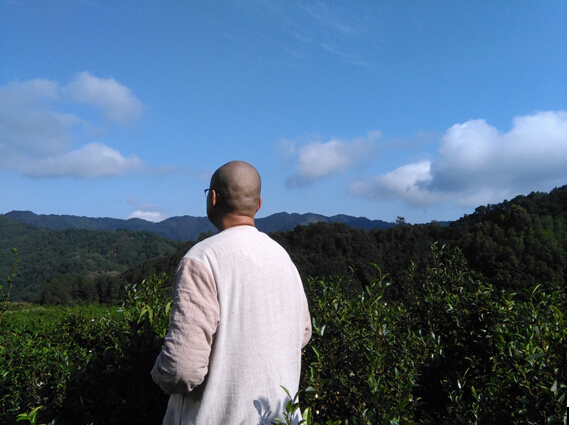
The tea leaves are clumped together. Are there bugs?
Congratulations! You’re about to taste authentic tea bug excrement! First, let us introduce this picky little creature. This tea bug, which only eats high-quality and aged tea, still hasn’t been given a scientific name in textbooks (feel free to fill in the blank). It thrives in warm, stable, and humid conditions. After munching on tea, it digests and excretes highly medicinal tea bug excrement (use your imagination). Ancient folk medical texts record that tea bug excrement, when boiled with ginger and Sichuan coptis, can treat childhood dysentery. Regular consumption can also have health benefits such as detoxifying, reducing inflammation, and aiding digestion. Due to its rarity, tea bug excrement is a prized byproduct of Liubao tea in the market.
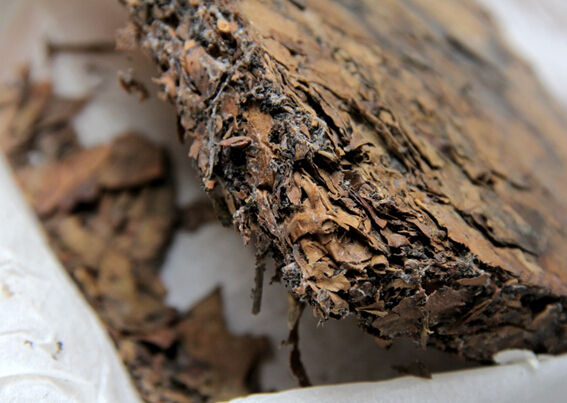
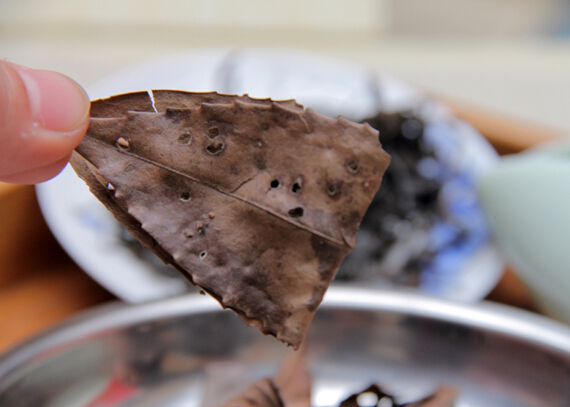
The secret of "yellow flakes" in Liubao tea
We checked the textbooks but couldn’t find a clear definition of "yellow flakes" (feel free to contribute). The term is most commonly used in the Pu-erh tea world. Some online sources claim that "yellow flakes" only apply to Pu-erh and not other tea types, meaning it doesn’t apply to Liubao tea.
So, what are "yellow flakes" in the Pu-erh context? We looked it up and found an article that seems reasonable: The so-called "yellow flakes" generally refer to the larger, older leaves in the harvested tea, usually the third leaf and beyond, but not exceeding the fifth leaf. These leaves have lower water content and looser, coarser textures, making them more prone to turning yellow during frying and harder to roll into strips during kneading. They are picked out to ensure the tea’s appearance and visual appeal (contributions welcome!).
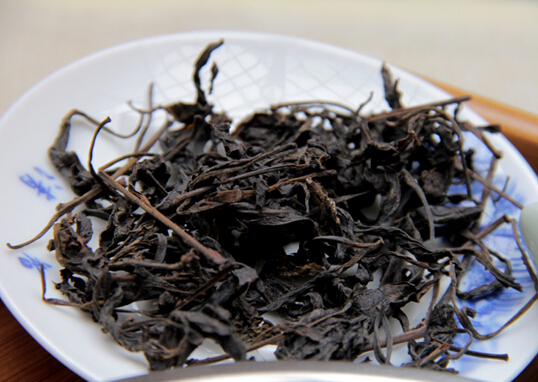
Now, let’s look at Liubao tea. In the traditional tea-making era, "middle-grade tea" referred to tea made from one bud with three or four leaves. This tea was not considered low-grade; in fact, it was highly popular in the market. Why? Because middle-grade tea, with its buds and leaves, has thick leaf tissues that result in a rich, layered taste, sweet and mellow flavors, long-lasting infusions, and great potential for aging. Combined with Guangshengxiang’s ancient fermentation techniques—Yan, Steaming, and Ju—the tea’s efficacy, taste, and storage value are further enhanced.
You might be surprised—how can such coarse leaves be so popular? Are you trying to fool me?
Well, let’s compare the tea varieties of Pu-erh and Liubao. Pu-erh uses large-leaf tea, while Liubao tea comes from small- to medium-leaf bushes. If you compare old "Lao Cha Po" leaves with Pu-erh’s large leaves, the former would only be about the size of the latter’s third leaf!
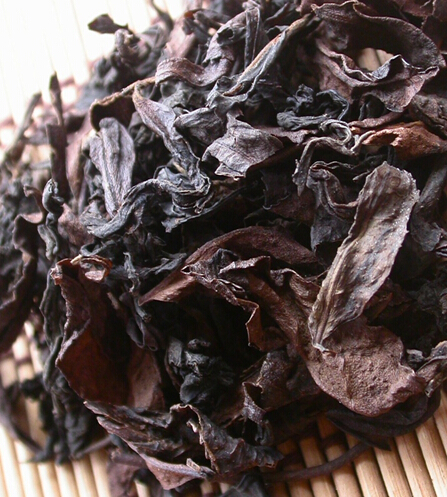
Aged over a decade, this Qing Chun Liubao tea is made from middle-grade leaves using the ancient Yan fermentation technique.
So, middle-grade Liubao tea consists of one bud with three or four leaves—not coarse at all. During production, tea masters adjust the techniques based on taste requirements, avoiding excessive kneading of middle-grade leaves. This is part of what makes Liubao tea unique (raw materials are the foundation, techniques are the key, and storage elevates the tea). If you’re after visual appeal, no dark tea can match the ornamental value of green tea—they’re simply different categories!
Why is the pine smoke aroma gone? Why is the betel nut aroma different?
The formation of betel nut aroma comes down to one thing: technique matters! The Xiang Chun series of teas are dried at low temperatures over a wood fire, giving them a distinct pine smoke aroma in the early stages. This process interacts with the tea’s initial fermentation, eventually developing the betel nut aroma. Over time, the pine smoke aroma fades, and the betel nut aroma mellows. A well-aged Xiang Chun tea, stored for over a decade, loses its pine smoke aroma, leaving behind a rich betel nut flavor—pure bliss!
The beauty of time lies in patience and understanding!

The tea’s taste has changed
Among the six major tea categories, dark tea is also known as post-fermented tea. In the market, the charm of dark tea lies in its mysterious and wonderful transformations during aging. It’s often said that one should "store new tea and drink aged tea." Wuzhou’s storage conditions always bring out magical changes in the tea, such as the mellow betel nut aroma and its incredible ability to dispel dampness and regulate digestion. If a Liubao tea didn’t transform, what value would it have?
Even teas from the same batch, shipped from Wuzhou at different times, will vary in taste, color, and energy. This is the beauty of Liubao tea! We encourage tea lovers to give it a try!
